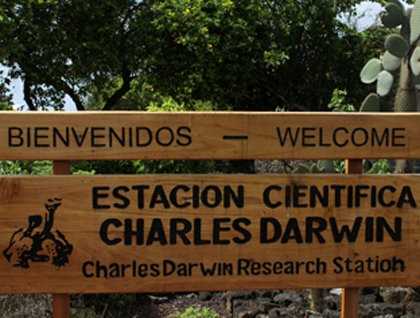After an incredible evening, spent observing the eruption of Wolf Volcano in Isabela, we navigated all night long, more than 70 nm, to reach the southeast tip of Santa Cruz Island.
Santa Cruz, also known as Indefatigable or Norfolk Island, is the second largest Island in the archipelago. It was originally called Norfolk, by James Cowley in 1684, after the Duke of Norfolk. The island was later renamed after HMS Indefatigable, a 64-gun battleship launched in 1784 that saw earned fame for its service during the Napoleonic Wars.
Today, the island hosts the largest human population, about 20,000 inhabitants, and one of the healthiest giant tortoise populations of approximately 5,000 individuals. Being the center of the economic activity of the Galapagos, the town of Puerto Ayora bursts with tourism, agriculture and fishing activities.
Our first activity today was a visit to the “Fausto LLerena” Tortoise Breeding Centre, run by the Galapagos National Park, where our guests learned about the enormous efforts taken since the 1960s to protect these giant prehistoric creatures. With the backup of one of the world most respected scientific stations, the Charles Darwin Scientific Research Station, many programs such as the tortoise breeding program have been implemented over the years, to save this emblematic species of the islands, as well as to restore its unique ecosystems.
After learning all about science behind conservation, it was time to explore the town and do some shopping. Seeing the fish market, the little cafes, the busy streets, the kids coming out of school, we were able to get a glimpse at how the residents, called “galapagueños”, live on these islands. After some time in town, we visited a private farm with sugar cane and coffee plantations, and we had a chance to sample some of their byproducts. What a perfect way to experience and understand unique interactions between humans and nature that exist here in the Galapagos.
Lunch was in the highlands, and afterwards we ventured out for a hike through the habitat, where we saw many different species of birds, plants and of course for our iconic animals, the giant tortoises. Big males and younger individuals were seen while most of the females started already their large migration to their nesting sites.
After today’s visit, conservation and tourism took on a unique meaning for our guests. Seeing full-grown tortoises thriving in the wild, and the efforts of the Darwin Research Center, has provided a deeper understanding of the role that each of us plays in the future of this unique archipelago. We hope that this message is something that they will pass on to future visitors and generations to come.







